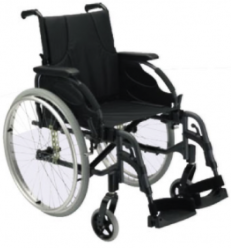Are you tired of the endless documentation that comes with being a medical professional? Do you wish there was an easier way to manage patient records without sacrificing accuracy or quality of care? Look no further than virtual technology!
In this blog post, we’ll explore how automating the medical scribe process with virtual technology can revolutionize your practice and improve patient outcomes. Say goodbye to tedious paperwork and hello to more time for what really matters – your patients.
What is Virtual Medical Scribing?
Virtual medical scribing is a process where a computer program is used to generate a written record of a doctor-patient encounter. This record can be used for medical billing, documentation, and other purposes.
The virtual medical scribing can help to improve the efficiency of the medical scribe process. It can also help to reduce the cost of the process. In addition, it can help to improve the quality of the written record.
Benefits of Automating the Medical Scribe Process
There are many benefits of automating the medical scribe process with virtual technology. Perhaps the most obvious benefit is that it can help to reduce the amount of time spent on documentation, freeing up clinicians to focus on patient care. In addition, automating the scribe process can help to improve the accuracy of medical records and reduce transcription errors.
Another important benefit of automating the medical scribe process is that it can help to improve patient satisfaction. When clinicians are able to spend more time with patients and less time on documentation, patients often feel more valued and receive better care. In addition, automating the scribe process can help to reduce wait times for appointments and test results.
Finally, automating the medical scribe process can also help to improve employee satisfaction within a medical practice. When clinicians are not bogged down by documentation, they often feel more satisfied with their jobs and are less likely to experience burnout. In addition, automating the scribe process can lead to increased efficiency within a practice, which can result in higher wages for employees.
Technologies Used in Virtual Medical Scribing
Virtual medical scribing technologies have come a long way in recent years, and are now able to provide an extremely accurate and efficient service for medical practices. Here are some of the key technologies used in virtual medical scribing:
- Natural Language Processing (NLP): NLP technology is used to process and interpret free-text medical notes, converting them into structured data that can be stored in electronic health records (EHRs). This helps to improve the accuracy of patient records and makes it easier for doctors to find relevant information.
- Machine Learning (ML): ML algorithms are used to constantly learn and improve the accuracy of virtual medical scribes. By analyzing large amounts of data, ML systems can identify patterns and trends that human scribes may not be able to see. This helps to ensure that virtual scribes are constantly providing accurate and up-to-date information.
- Speech Recognition: Virtual scribes use speech recognition technology to convert doctor’s speech into text. This is usually done using a headset that the doctor wears during consultations. The accuracy of this technology has improved dramatically in recent years, thanks to advances in artificial intelligence (AI).
- Data Integration: In order for virtual scribes to be effective, they need to be able to integrate with various EHR systems and other health IT platforms. This allows them to access patient records as well as other important data sources, such as laboratory results or radiology images.
Steps to Implementing a Virtual Medical Scribing System
- The first step to implementing a virtual medical scribing system is to find a reputable provider of the technology. There are many companies that offer virtual medical scribing services, so it is important to do your research to find one that is reputable and has a good track record.
- Once you have found a reputable provider, the next step is to sign up for their service. This usually involves providing some basic information about your practice, such as the number of doctors and patients you see on a daily basis.
- The next step is to train your staff on how to use the new system. The provider should offer training materials and support to help you get started. It is important that everyone who will be using the system is properly trained so that there are no hiccups when it goes live.
- After your staff has been trained, the next step is to go live with the system. This means that you will start using it for all patient encounters. It is important to have a smooth transition from your old system (if you had one) to the new virtual scribing system.
- Finally, continue to monitor the system and make sure it is running smoothly. If you encounter any problems or have any questions about the system, reach out to your provider for help. This will ensure that you are getting the most value out of your virtual medical scribing system.
Challenges with Virtual Medical Scribing
One of the key challenges with virtual medical scribing is that it can be difficult to create an effective user interface that is both easy to use and provides all the necessary features for users. Additionally, virtual medical scribing systems need to be able to accurately convert speech to text, which can be a challenge for some systems. Another potential challenge with virtual medical scribing is ensuring that all the relevant information is captured, as some details may be missed if the system is not designed properly.
Examples of Companies using Automated Medical Scribes
There are many companies using automated medical scribes to help with their documentation. Below are a few examples:
- eClinicalWorks is a company that provides an electronic health record (EHR) system. They offer a scribe service that can automate the documentation process.
- Greenway Health is another EHR company that offers an automated scribe service.
- Practice Fusion is a company that provides a free EHR system. They also offer an automated scribe service.
- Epic Systems is a company that provides integrated software for the healthcare industry. They offer an automated scribe service as well.
Conclusion
Automation of the medical scribe process with virtual technology is a valuable tool for physicians and their teams. With the use of these technologies, healthcare professionals can save time, improve accuracy, and increase efficiency in providing patient care. Additionally, it removes the need for manual data entry by eliminating paper records, which allows them to focus on more important tasks such as clinical decision-making or developing better treatment plans. Ultimately, automation with virtual technology provides physicians and their teams with an efficient way to document patient encounters while also improving the overall patient experience.







